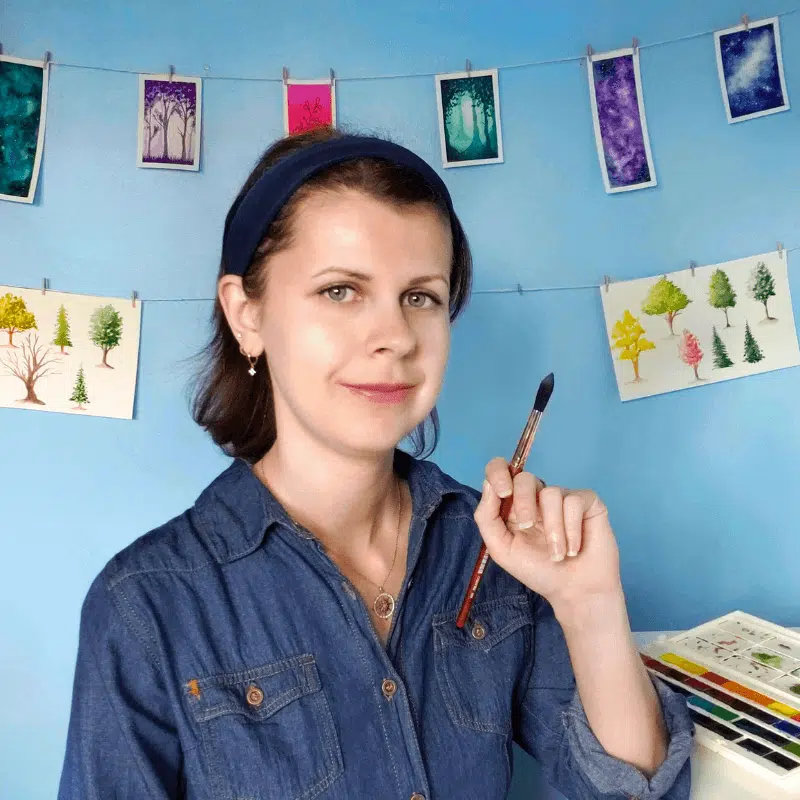Watercolour value scales are a secret weapon that’ll help you improve your watercolour skills.
But first, you might be wondering, “What is a value scale in watercolour painting?”
A value scale shows the full range of a hue’s lightest to darkest tones. In watercolour painting, adding more water to a pigment lightens the value whereas using less water makes the pigment darker.
As you can see, learning about values is very important for watercolour artists because:
- Understanding values helps you use a hue’s full range of values more effectively.
- Developing this skill helps you master the correct paint-to-water ratio that you need to create light, medium, and dark values.
- Painting value scales is great practice because you create value scale reference charts for your pigments.

In other words, not taking the time to study values can make or break your painting.
But don’t worry!
The first step to developing or improving this skill is actually quite easy.
So, let’s have a look at the step-by-step process of creating your own watercolour value scales.
How Do You Make a Value Scale in Watercolour?
Before you begin, make sure you have a pencil, eraser, ruler, a single watercolour pigment of your choice, a mixing tray, clear water, a blank piece of watercolour paper, and a flat brush.
Once you have your watercolour supplies ready, follow these simple instructions:
- First, use your pencil and ruler to create a large rectangle on your watercolour paper.
- Then, divide the rectangle into six equal sections that are all the same length.
- Third, dilute the watercolour pigment on your mixing tray to create the lightest tone possible. Load up your brush with the light, watery pigment.
- Next, identify the section at the end of the scale and keep this first box white. Skip to the second box and fill it in with the watered-down pigment.
- Fifth, add a little more pigment to the mixing tray to darken the paint a bit. Load up your brush.
- Then, colour in the third box with this slightly darker pigment.
- Repeat steps five and six by adding a little more pigment to each box on the scale.
- Last, wait for the watercolour value scale to dry.

When you’re all done, every box on the scale should be completely filled in with pigment.
The paint in the final box should appear the darkest whereas the pigment at the opposite end of the scale should be pure white.
Note: For extra practice, paint watercolour value scales in different colours so that you can see the full range of all your pigments.
Value in Watercolour Painting: Next Steps
Congrats! You’ve learned how to make easy watercolour value scales.
Practicing value scales is comparable to a pianist learning how to play piano scales: the more you practice this fundamental skill, the better you will become at your craft.
Now it’s time for you to take this skill one step further by learning how to use values in watercolour painting.
Action Step: Join me by enrolling in my online watercolour course titled Monochrome Watercolor Painting: Master Value And Tone With One Color to learn how you can use colour and value to enhance your paintings.
In this course, you learn how to create four awesome monochrome watercolour paintings by using values in unique and creative ways.
Simply click the image above to learn more about this exciting opportunity to develop your watercolour painting skills!
This article originally appeared on Foxsy.

Miranda Balogh
Artist & Online Educator






Leave a Reply